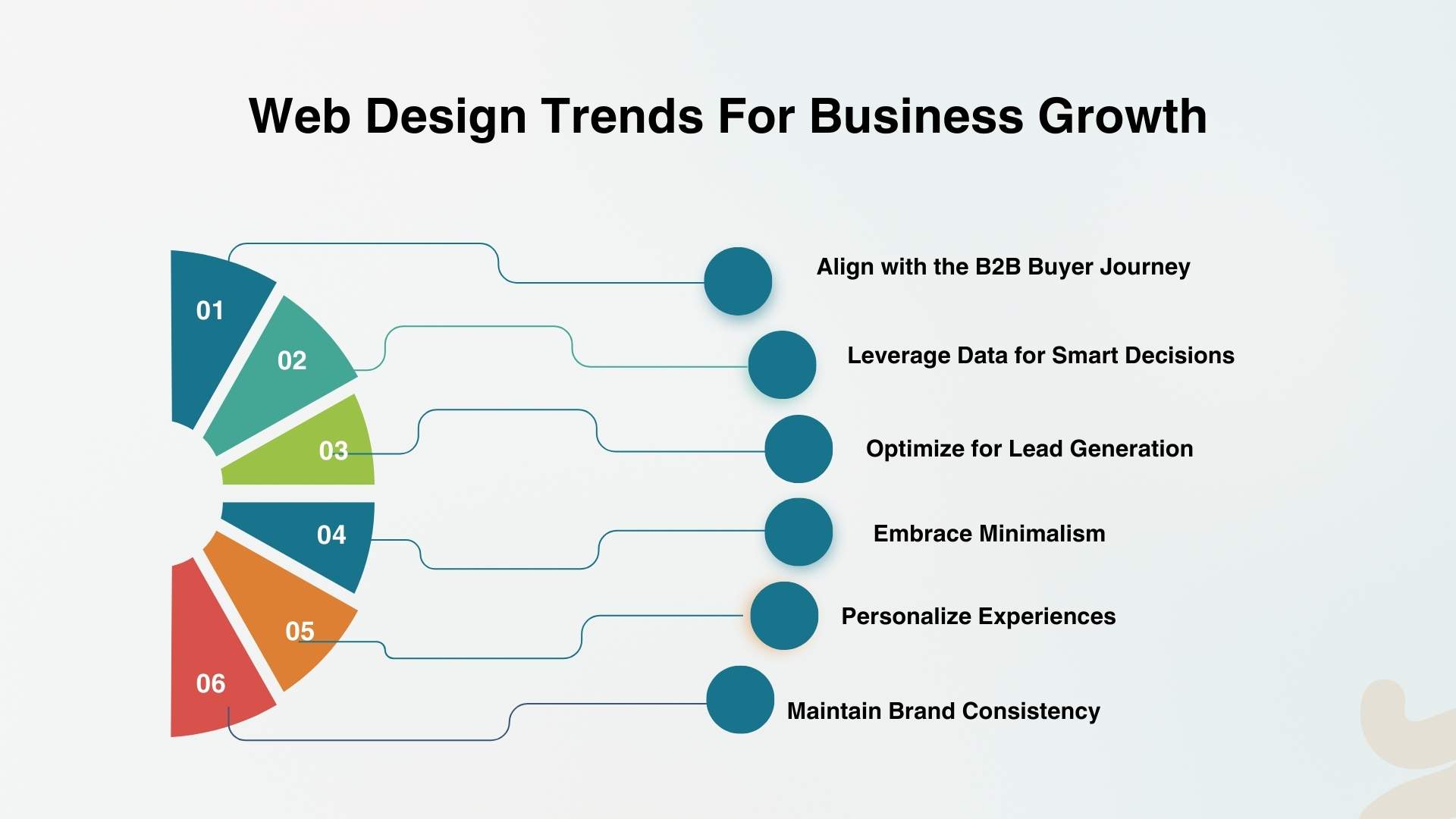If a user lands on your website, do you think they will stay or bounce within the first 5 seconds? It largely depends on your website’s design.
Do you know you must ask this question after every few months? Why? Because design trends, user expectations, and technology change constantly. What worked last year may not be the right fit in the current market scenario. What was grabbing people’s attention yesterday may not be working anymore.
Entrepreneurs must stay aligned with constantly changing digital trends to ensure their website continues to perform, convert, and reflect the evolving needs of their audience.
Since every business operation is taking place over the online realm, it is compelling to incorporate the latest web design trends. If we talk about last year, it brought a surprising change for all of us. We all have witnessed drastic changes in every sphere of life, and digital platforms are no exception. COVID-19 has forced everyone to adopt a new lifestyle.
Similarly, you need to follow the latest website design trends to prevent your online store from degrading and losing the customer’s attention. Read the points below to know why web design services are essential and why you need it.
- 75% of users judge a company’s credibility according to its website’s visual design.
- While talking about healthcare websites, 94% of users’ first impressions were design-related.
- You only have 50 milliseconds to leave the first impression of your site.
- Approximately 38% of users will stop engaging with your website if it fails to deliver an engaging and quality layout.
Also, multiple reasons prove that a great web design is imperative for your business growth. Before we proceed, why not have a short discussion about why having an aesthetically pleasing website design is a must:
- It sets the first impression
- It aids your SEO strategy
- It builds trust and enhances customer engagement
- Your competitors are doing it
- It creates consistency
- It is the best way for customer service
In this blog post, we will highlight the latest visual and functional web design trends. These innovative design trends are a must-have for your next website development project.
Earlier, we posted a web design guide which also included a section where we mentioned some of the trends, but here we are going a step ahead and exploring the latest website development process and website design cost.
Modern Web Design Trends Dominating In 2025

1. Dynamic Content Personalization
Modern users expect websites to deliver content that’s relevant to their unique interests. Dynamic content, such as adaptive visuals, personalized recommendations, and behavior-based calls-to-action, is now central to a modern website layout.
In 2025, with AI and machine learning more advanced, websites can predict user intent, tailoring experiences in real-time. Whether it’s a homepage adjusting to the time of day or product suggestions based on past behavior, dynamic content is a cornerstone of current web design trends.
2. Voice-Activated Interfaces
Voice search is no longer a novelty, it’s becoming a default. As users rely on voice assistants like Alexa and Google Assistant, websites must support voice navigation and voice-optimized content structures. Voice-enabled browsing enhances accessibility and convenience, shaping the future of web design.
Integrating voice commands and AI-driven conversational experiences into your site isn’t optional anymore; it’s part of staying ahead in the evolving web design landscape.
3. Accessibility and Availability
A truly modern website design ensures that every user, regardless of ability or device, can easily interact with your content. This means supporting screen readers, enabling keyboard navigation, using high-contrast colors, and ensuring consistent performance across networks.
Meeting WCAG 2.2 accessibility standards and optimizing for low-bandwidth conditions reflect both technical excellence and ethical responsibility.
4. Micro-Animations
Forget distracting full-screen videos. Micro-animations, like hover effects, loading indicators, or swipe transitions, add polish and clarity to user interactions. These subtle movements make your site feel alive without compromising performance.
Today’s trends in web design favor lightweight, CSS- or SVG-powered animations that enhance, not clutter, the user experience.
5. Immersive Data Visualization
With data playing a central role in decision-making, turning complex insights into engaging visuals is key. Innovative B2B website design now includes scroll-triggered infographics, interactive dashboards, and real-time visual analytics.
Such features not only make your content more digestible but also position your brand as a leader in clarity and innovation.
6. Mobile-First and Beyond
Mobile-friendly design is table stakes. In 2025, expect more brands to adopt mobile-first strategies, from gesture-based navigation and voice integration to ultra-fast performance on low-spec devices.
Responsive design isn’t just about shrinking layouts, it’s about optimizing every experience for touch, mobility, and connectivity.
7. Virtual Reality Integration
In sectors like real estate, retail, travel, and education, VR is transforming engagement. From 360-degree virtual tours to spatial audio walkthroughs, immersive digital environments are making product exploration more realistic.
As these technologies become mainstream, expect VR and AR integrations to be central to forward-thinking web design styles.
8. Smarter Chatbots
AI-powered chatbots are evolving to offer human-like conversation, personalized recommendations, and even voice interaction. These tools support lead generation, customer service, and real-time assistance, making them essential to the modern website layout.
9. Interactive 3D Elements
3D objects and interactive scenes are gaining traction, especially in e-commerce and product-focused websites. These elements add depth and engagement, aligning with the visual-forward future of web design.
10. Emotive Typography
Fonts now do more than display text; they communicate emotion. Creative typography in 2025 will align closely with branding and UX to evoke mood, build trust, and capture attention. It’s a subtle but powerful design lever in creating memorable experiences.
11. Innovative Scrolling Techniques
Websites are breaking free from traditional scrolling:
- Long scrolling for immersive storytelling.
- Fixed scrolling that keeps key navigation in view.
- Scrolling cards for swipe-style interaction.
These techniques elevate engagement while maintaining clarity.
12. Bold Color Palettes
In 2025 web design trends are embracing vibrant, high-contrast color schemes that convey personality and brand identity. Strategic color choices rooted in psychology are key to drawing attention and guiding behavior.
Website Design Trends to Avoid in 2025
To truly embrace modern design, businesses must also avoid outdated web design styles that hinder usability and performance:
- Auto-Playing Videos with Sound: Interruptive and bandwidth-heavy. Offer user control instead.
- Overly Complex Layouts: Clutter confuses. Keep your layout clean and scannable.
- Intrusive Pop-Ups: Use well-timed, value-driven pop-ups that don’t ruin the experience.
- Heavy Media That Slows Pages: Compress videos and images. Use lazy loading for performance.
- Complicated Navigation: Menus should be intuitive and accessible from any device.
- Ignoring Mobile Optimization: With over half of traffic coming from mobile, poor mobile UX is a deal-breaker.
- Overused Stock Photos: Custom, brand-aligned visuals build more trust and emotional connection.
- Outdated Fonts and Colors: Stay on-brand with modern typography and a refreshed color scheme.
- Ignoring Accessibility: Inclusive design isn’t optional—it’s mandatory for reach and compliance.
- Weak or Missing CTAs: Guide users clearly. Every page should support a logical next step.
How B2B Website Design Trends Help in Business Growth?
Trendy design alone isn’t enough. Here’s how to turn the top web design trends into long-term ROI:

- Align with the B2B Buyer Journey: Create content and user flows that support awareness, evaluation, and decision stages.
- Leverage Data for Smart Decisions: Use analytics, heatmaps, and A/B testing to inform design improvements.
- Optimize for Lead Generation: Use forms, live chat, email capture, and gated content strategically.
- Embrace Minimalism: Reduce friction. Highlight what matters. Let whitespace breathe.
- Personalize Experiences: Use AI and dynamic content to serve industry-specific insights and CTAs.
- Maintain Brand Consistency: Unified colors, voice, and visuals across the site build credibility and trust.
- Prioritize Speed and SEO: Fast sites rank better and convert more. Use optimized code and SEO best practices.
Conclusion
In 2025 and beyond, innovative website design means putting the user at the center while leveraging emerging technologies to elevate engagement and performance.
These web design trends are useless if you don’t have a proper design plan for your website. It is advisable to make a thought and create a complete web design plan in your mind. To ensure professional execution and stay aligned with the latest trends, it’s a smart move to hire web designers who understand both aesthetics and usability.
You can also make a combination of your thoughts and trendy web design ideas to create innovation. Sparx IT Solutions provides remarkable corporate website design services on a global scale. We expect to see a slew of eye-catching and clean websites that enhance user experience.
Our professionally trained web designers help brands generate more revenue with fantastic website development services. We are always ready to shape your web design ideas into a high-functioning and quality product.

Partner with Experts
Frequently Asked Questions
What are the top website design trends in 2025?






Let’s dive into a quick summary of the top web design trends set for 2025:
- AI-powered personalization
- Smarter Chatbots
- Micro-interactions
- Mobile-first design
- Voice Navigation
What are some timeless website design trends that always work?










These elements consistently deliver great user experiences regardless of changing trends.
- Simple and Minimalistic Layout
- Mobile-Friendly Design
- Quick Page Loading
- Visible and Effective Calls to Action
- Consistent Visual Identity
- Legible Fonts
What’s the difference between web design trends and UI/UX design?










Web design trends involve the newest styles, layouts, and visual features that give websites a fresh and appealing look. These trends mainly concentrate on the site’s overall appearance and design aesthetics. On the other hand, UI/UX design (User Interface and User Experience) focuses on how visitors interact with the website. Its goal is to create a smooth, easy-to-use, and enjoyable experience, making navigation simple and satisfying for users. In short, web design trends highlight the look and feel, while UI/UX design emphasizes usability and user satisfaction.
Is it necessary to follow every new website design trend?










It's not necessary to follow every design trend. Focus on trends that align with your brand, improve user experience, and support your business goals.




